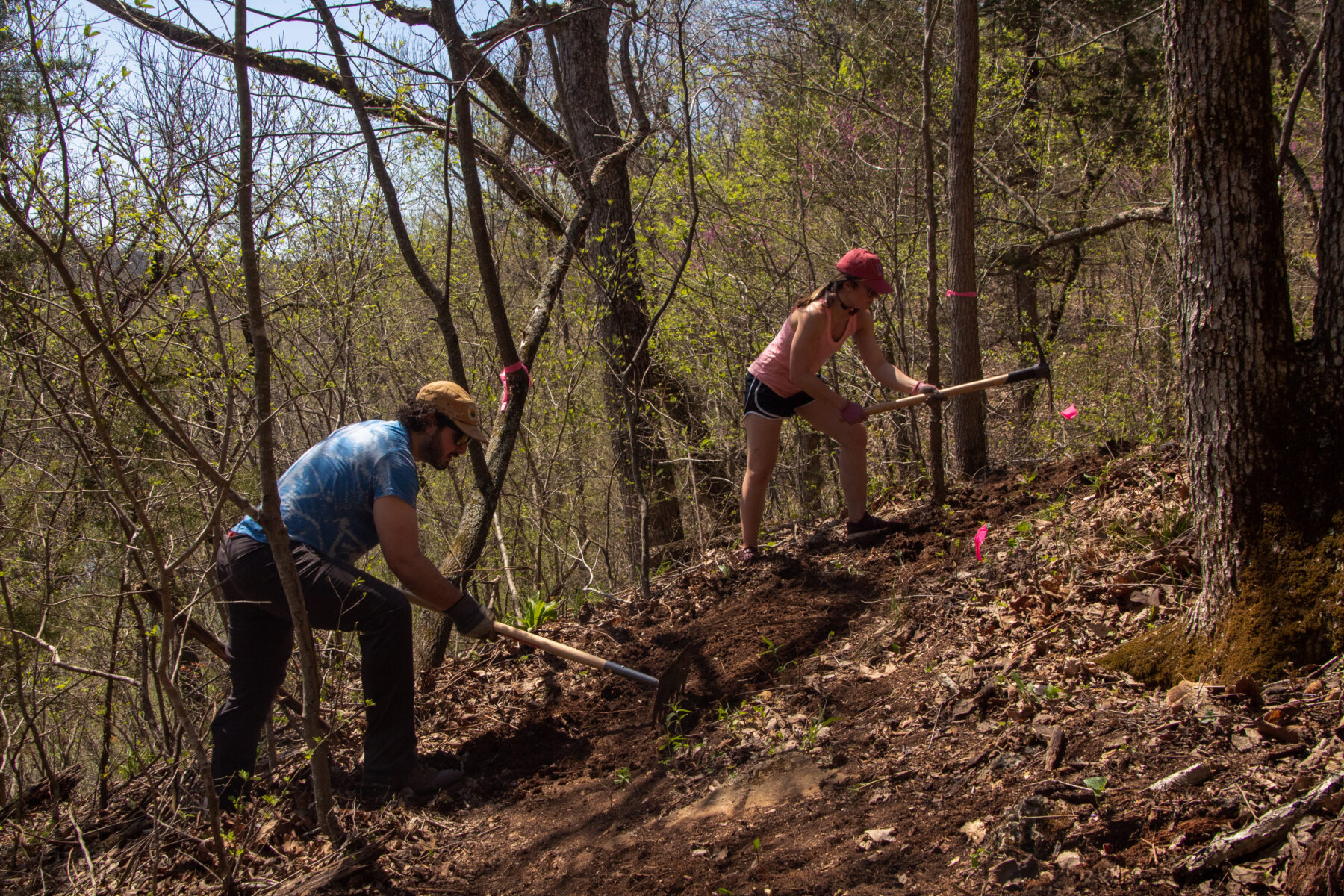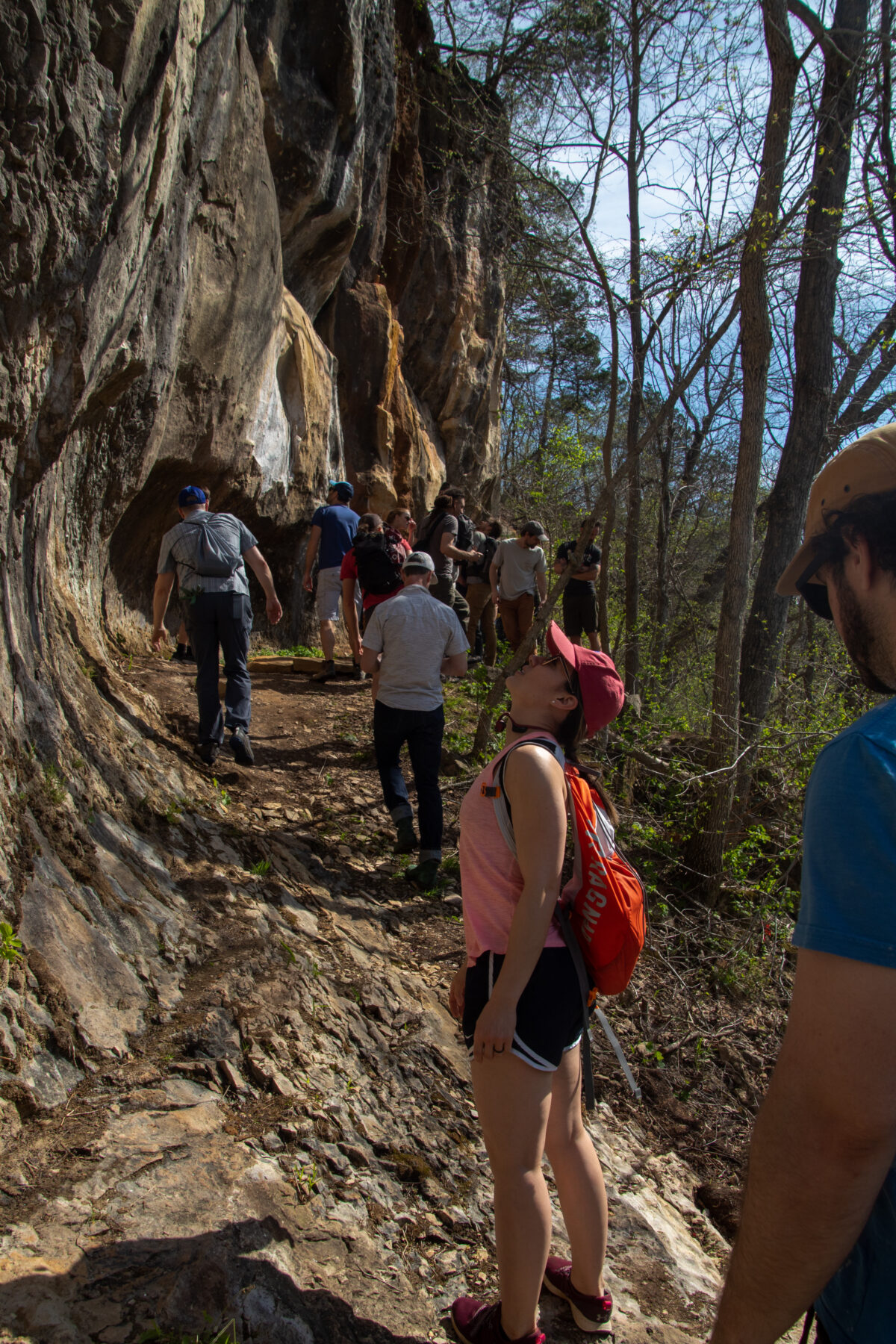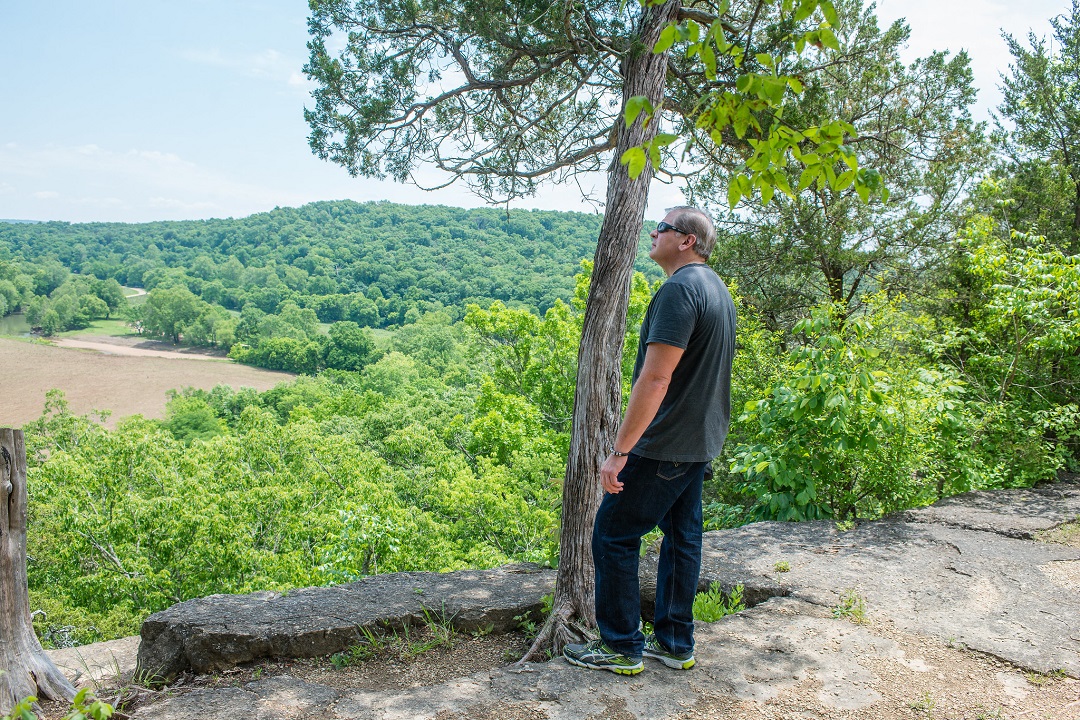A 50-foot limestone bluff along the Big River in De Soto, Missouri, has long served as an unofficial or “underground” location for seasoned climbers, with old, plated-steel bolts installed in the multicolored rock face some decades ago by early explorers of the area. Although climbing the wall at Washington State Park is not currently open to the public, negotiations about the opportunity began between Missouri State Parks and the BETA Fund in 2015, and the two agencies have now partnered to create official, much safer access to this exceptional climbing area. Together, they are dedicated to opening the crag for the 2022 fall season.
“It’s going to be an incredible climbing destination and location,” said Kevin McCarthy, a dedicated board member for BETA Fund, a St. Louis-based nonprofit organization that ensures the outdoor community is well-represented in talks about where climbing can be accessed in the Midwest. It has worked in partnership with private landowners, the Missouri Department of Conservation, and Missouri State Parks.
Phase One: A New Trail
The Washington State Park project will be completed in three phases. The hesitation to open the climbing area was due to safety concerns along the access trail, which requires passage along a narrow pinch point along the cliff. If one was to slip and lose footing at this point, they would likely fall over the edge and into the river.
It was decided that a new access trail would be the best solution, hence the first phase of this exciting project.
In April of this year, BETA Fund hosted a trail building day to develop a 1/4-mile access trail with an eye for both safety and aesthetic, featuring even better views than the old trail. Before the build, it also held a virtual trail building training hosted by the trail coordinator for Missouri State Parks, focusing on the importance of intentional trail building techniques to avoid washouts, excessive erosion, shortcutting, and other potential problems.

Cutting the new access trail at Washington State Park. (Jake Leonard)
“About 30 volunteers came out to help. It was a great turnout,” said McCarthy. They completed about 80 percent of the trail in the single trail building day, a great example of what can be accomplished when a community comes together, says McCarthy.
Phase Two: Rebolting
The next step is to remove the old expansion bolts, which are spinning and rusted, and replace them with new stainless-steel bolts. The BETA Fund board planned to get out there by the end of this summer to complete the task and meet its goal of opening access for the fall climbing season.
“We are all committed to getting the area open by fall,” said McCarthy.
The crag will include climbs of all calibers, with routes varying from appropriate for the recreational climber to challenging for the climbing elite. Climbers will be able to choose from more beginner-friendly pocket routes, interesting corner climbs, and difficult routes that require challenging holds, side pulls, under clings, and dynamic movement, demanding creativity in the climb. The crag will feature up to 15 routes, with varying grades from 5.8 to 5.13 or harder.
“Let’s just say it’s not straightforward at all…it may feature some of the hardest climbs in the state,” said McCarthy.
The dynamic climbing experience will be a significant addition to Missouri’s climbing landscape, he says,
Phase Three: Parking
Another major roadblock to opening the crag is parking; so, the third and final phase of the project will be a parking lot installation led by Missouri State Parks. The new access trail begins at the location selected for this new lot, just to the west of the crag.

Sizing up the bluff at Washington State Park. (Jake Leonard)
“We are so lucky to have such a willing and dedicated partner through Missouri State Parks,” said McCarthy, who extended his gratitude to everyone who has been involved in the journey.
This is yet another big step forward in making recreational outdoor climbing more accessible to all, he says.
The Story Continues
Located in the heart of the state, Washington State Park is unique among Missouri’s parks. It is perhaps best known for containing the largest group of petroglyphs yet discovered in the state. These rock carvings are evidence of prehistoric ceremonies associated with Native American culture and give clues to understanding the lives of those believed to have inhabited the area around 1000 A.D.
Another unique aspect of the park and its history is the impressive stonework done by Company 1743, an African-American company of the Civilian Conservation Corps. After the initial portion of land was donated to the state for a park in 1932, Company 1743 built a stone dining lodge, known as Thunderbird Lodge for the Native American thunderbird symbol carved into its stone chimney.
The company also laid stone for what is known as the 1,000 Steps Trail and created the inspiring lookout structure found on the trail, one of many beautiful structures it built at the park.
Acknowledging this rich history, it is fitting that yet another celebration of humanity’s relationship with the Earth and its awesome geological forms will soon be found at Washington State Park.
Author: Sydney Joy Willis is a contributor to Terrain Magazine.
Top Image: On top of the bluff at Washington State Park. (Missouri State Parks)


Leave A Comment